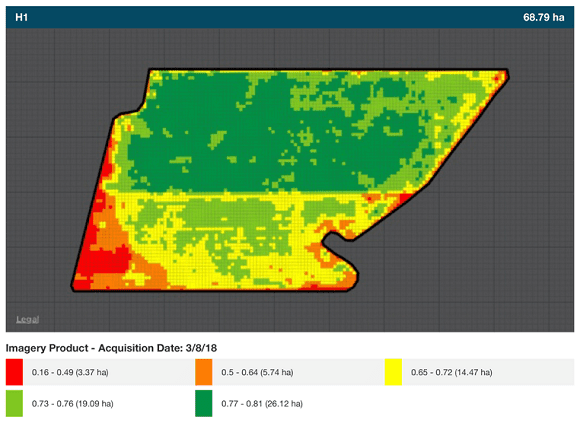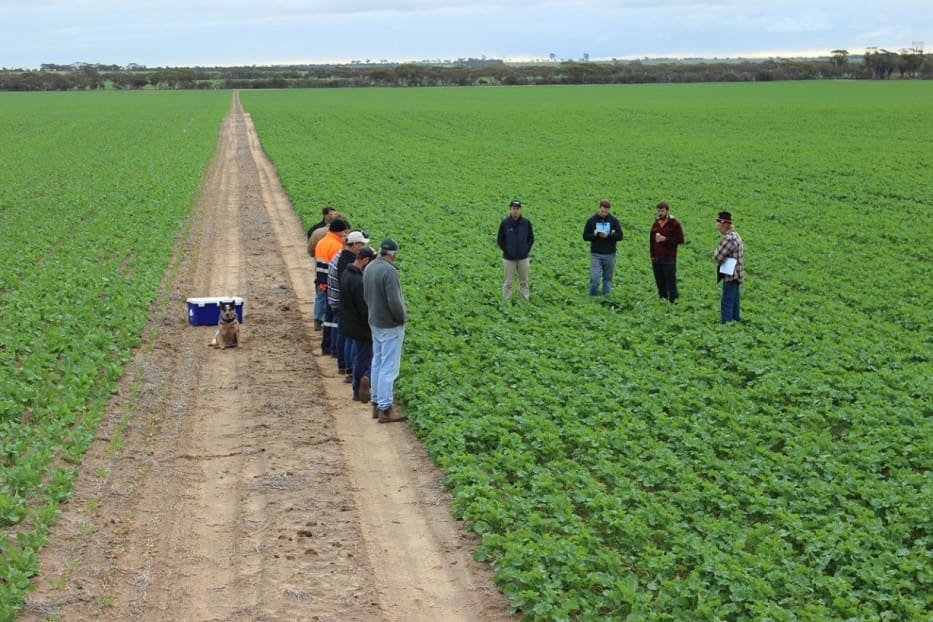A LARGE-SCALE trial conducted by farmers and an agronomist north of Trayning in Western Australia, which compared open pollinated triazine tolerant (OP TT) canola to Roundup Ready (RR) canola, has demonstrated a $105 per hectare benefit for RR over OP TT.
Farmers Trevor and Carol Fowler teamed up with Landmark Wyalkatchem agronomist Bernie Quade for the 2018 broadacre evaluation in search of better grower-based data for the area.
Mr Quade said the result of this trial confirmed that consideration needed to be given to the RR canola system as an alternative to the traditional OP TT canola system in this environment.
“After taking into account an assumed seed cost of $74/ha for RR seed and $1/kg for retained Bonito, there is a total benefit of $105/ha growing RR over TT in this trial,” Mr Quade said.
“Importantly, this does not take into consideration that the total herbicide costs are lower in the RR system, that there are RR varieties that can now show even higher performance than 404RR from a profitability standpoint, and also that pedigree Bonito was used in the trial but retained seed pricing was used.”
Mr Quade worked on a price of $535/t for GM grain and $575/t for non-GM grain.
He said the district didn’t grow any RR hybrids due to the perceptions around the value equation.
“There’s the perception that RR canola is either too risky due to significant upfront seed cost or that this crop type delivers no economic benefit over and above OP TTs.”
A 50-hectare block, sprayed out of lupins in 2017, was planted to Hyola 404RR and a 20ha block in the same paddock alongside it was planted to Bonito with a Flexicoil air seeder on April 20.
Atrazine and propyzamide were used pre-emergent on the Bonito and propyzamide on the Hyola 404RR.
Standard post emergent treatments of atrazine and grass selectives were used in the TT and Roundup in the RR canola.
Opening rain was received on May 24 of 10.5 millimetres, then June received 49mm, July had 46.5mm, August had 24mm, September had 9.5mm and in October, 14mm fell. The total growing season rainfall was 153.5mm.
Fertiliser at seeding consisted of 24 nitrogen, 5 phosphorus, 4 potassium, 4 sulphur, 0.05 copper and 0.1 zinc, and at the six-leaf stage, 17 of nitrogen and 19 of sulphur were applied.
Mr Quade said a photo taken with Normal Difference Vegetative Index (NDVI) technology on August 3 of the in-season biomass shows a distinct line in the image where the variety changes from Bonito to Hyola 404RR.
“The improvement in vigour and biomass of Hyola 404RR over Bonito was very significant which would only aid to overall weed control. ”

An NDVI image of the trial site showing the differences in biomass between Hyola 404RR (dark green) and Bonito (light green and yellow).
The demo was harvested on November 24 with the Fowlers’ header and yield of both varieties was taken immediately alongside each other in one-kilometre runs to enable the closest possible comparison.
Mr Quade said the profitability of the RR system in the trial was one reason for utilising the system, not just if clethodim was beginning to fail in controlling ryegrass in an OP TT system.
“Also, the proven significant increase in biomass and vigour of the RR system, which aids weed suppression, needs to be considered as a real benefit to any farming system.”
Source: Pacific Seeds
Bayer contributed towards trial costs and trial concept and Pacific Seeds supplied Hyola 404RR seed for the trial.




HAVE YOUR SAY